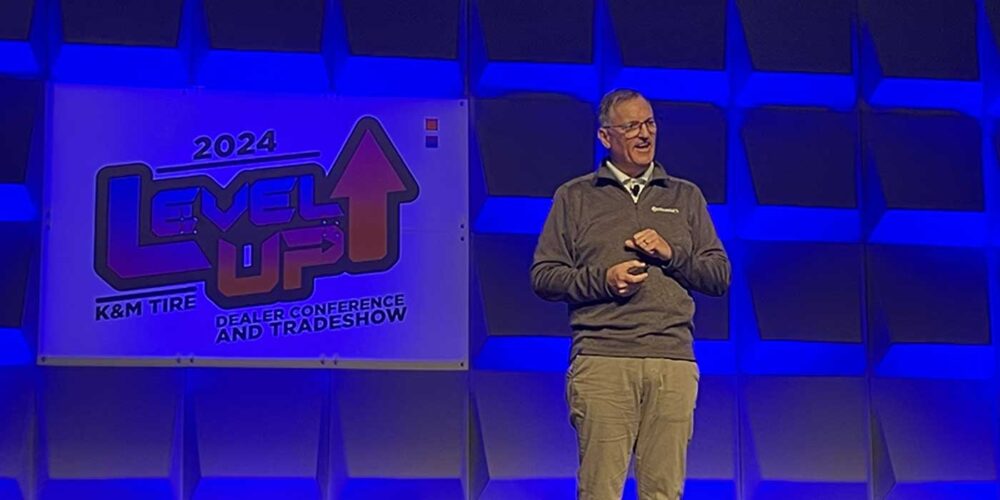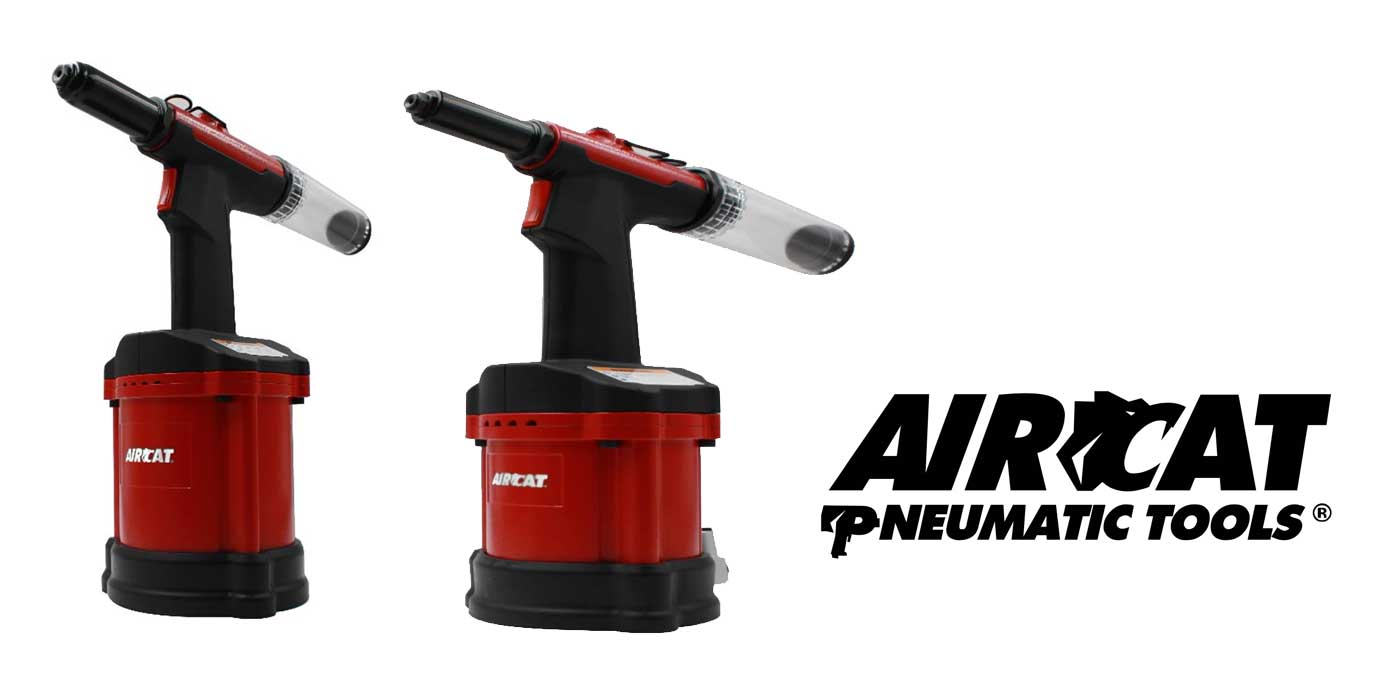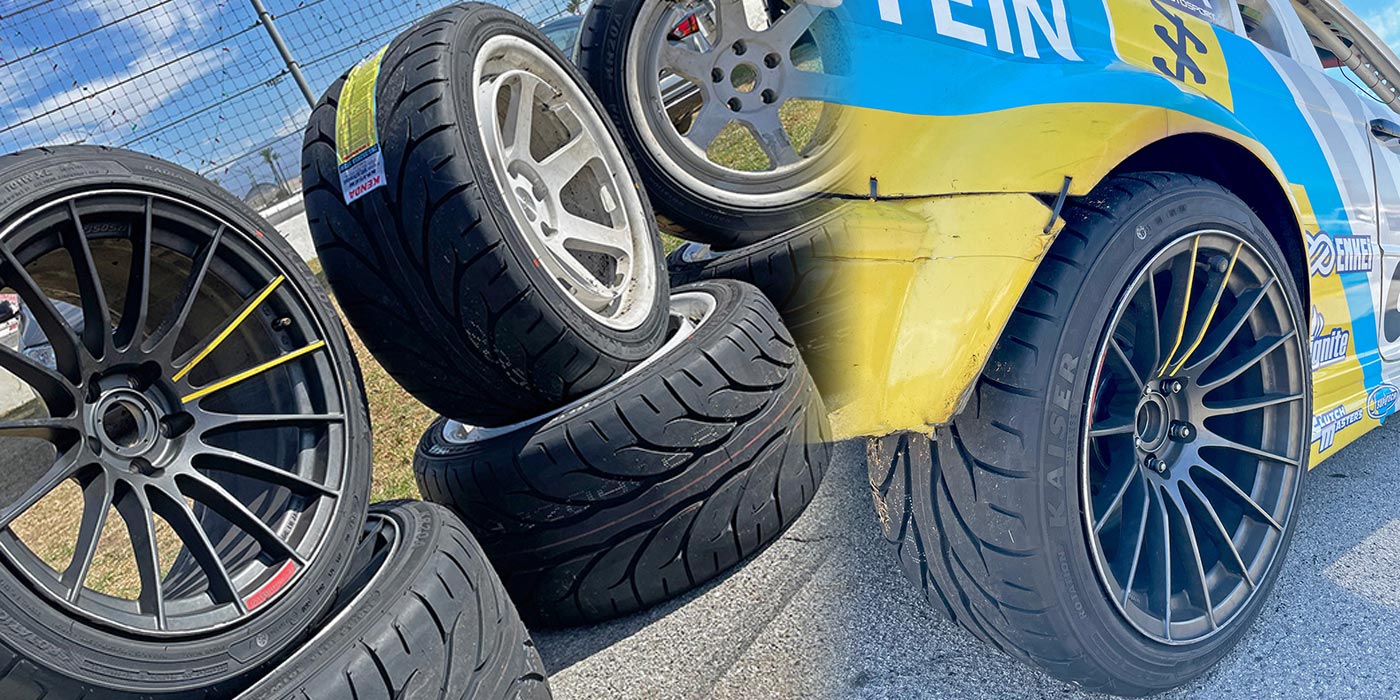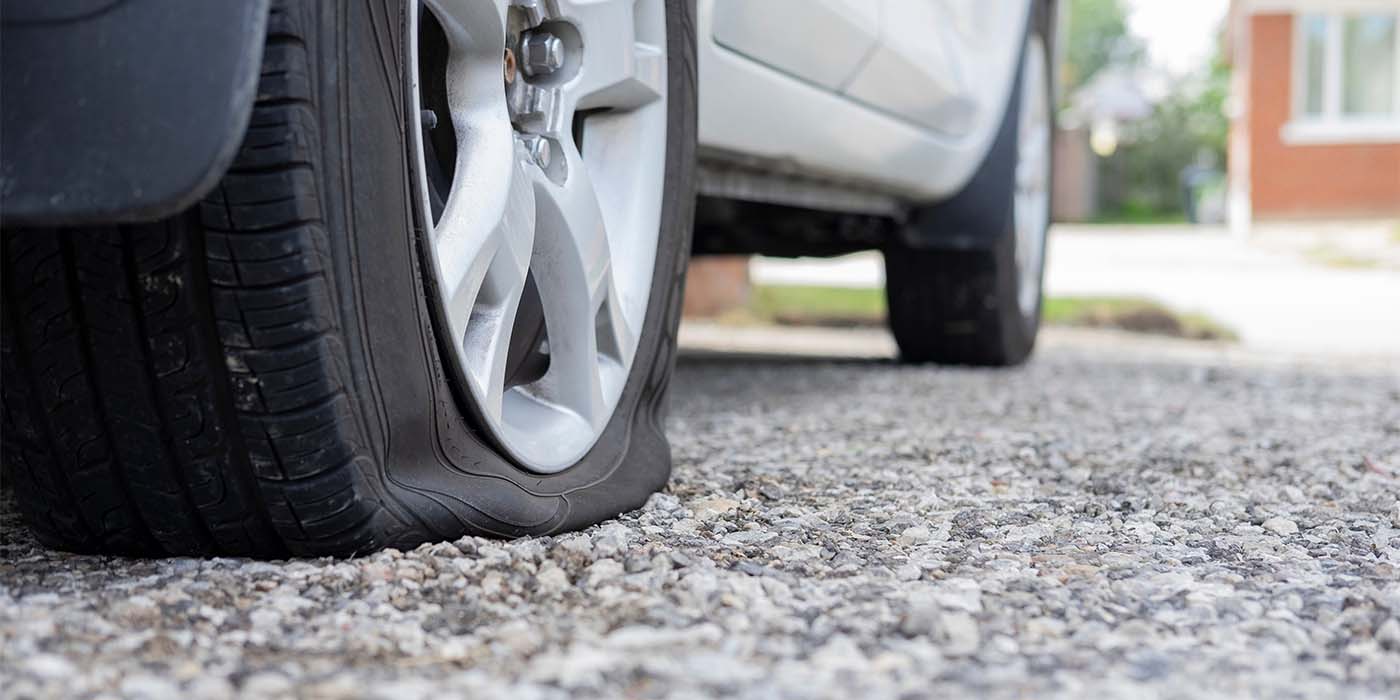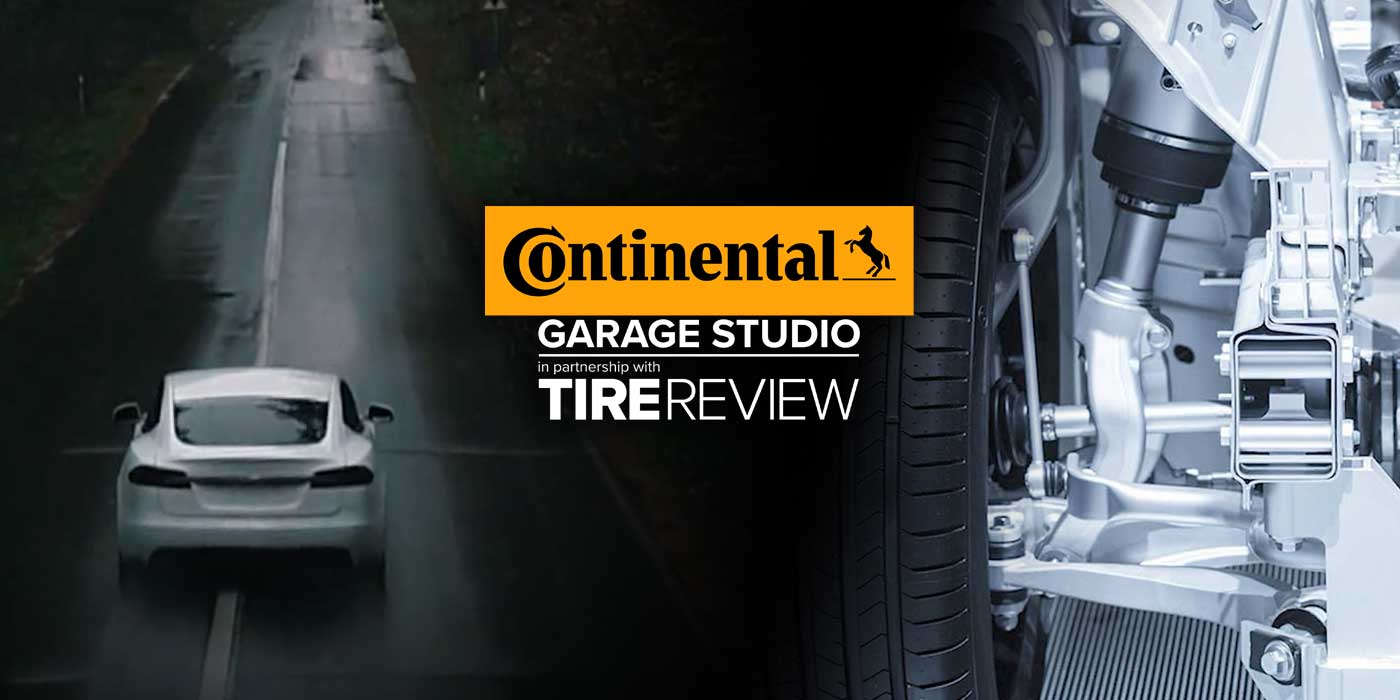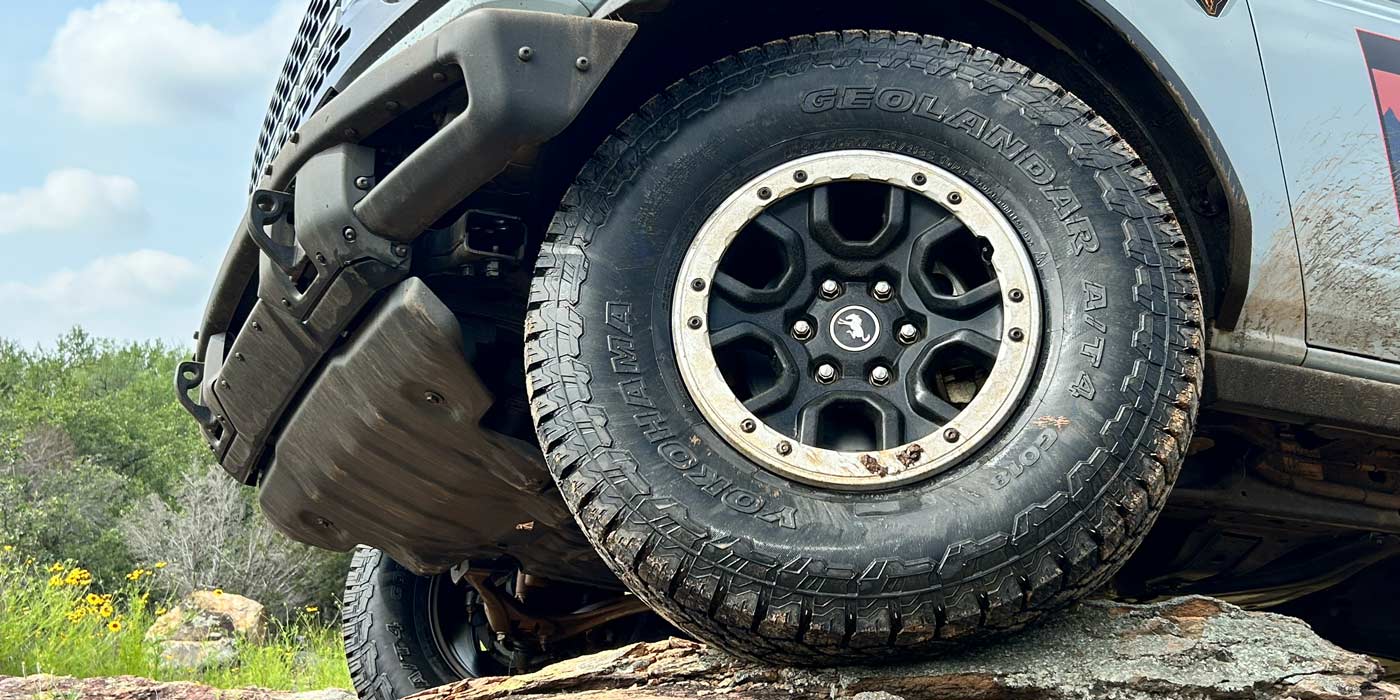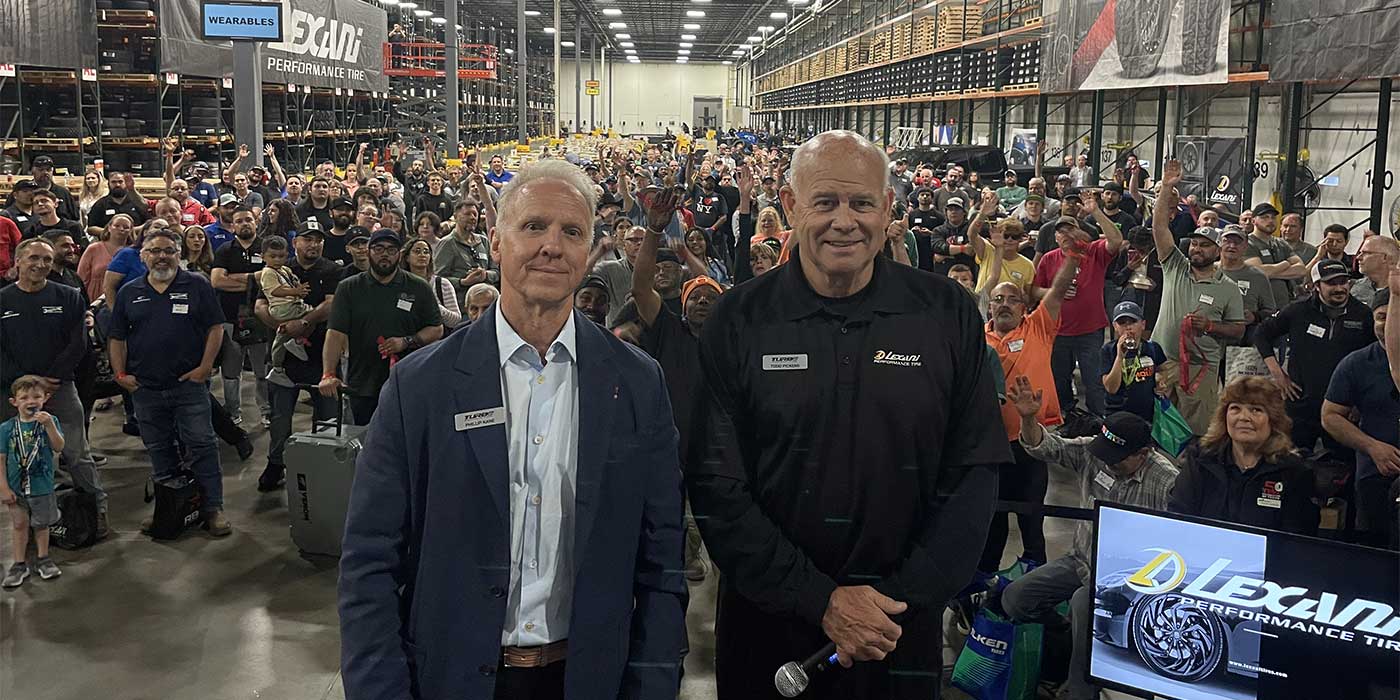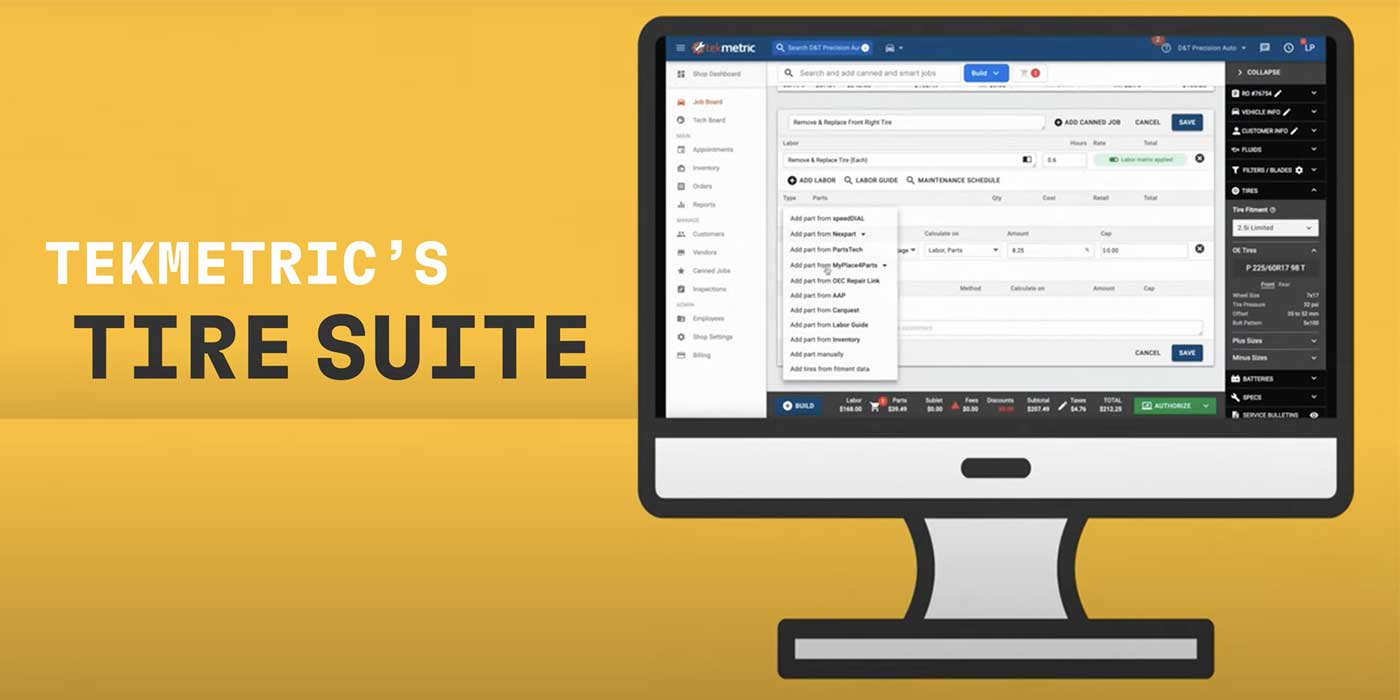During this year’s 2024 K&M Tire Conference and Trade Show, Bill Caldwell, senior vice president of sales and marketing at Continental Tire, updated dealers on the company’s approach to the EV tire market and its “EV ready” tire stamp. Caldwell acknowledged that EVs present unique tire considerations compared to traditional internal combustion engine vehicles and discussed how to help customers choose between original equipment manufacturer (OEM) or replacement fitments.
According to Caldwell, OEM tires tailored for EVs typically prioritize efficiency and range, often at the expense of tread life. Replacement tires, like the ones offered by Continental, prioritize maximizing tread wear with slightly higher rolling resistance, which could reduce range.
He said it’s important to vet customer priorities and driving habits to help them select the right tires for their preferences. Customers focused on maximizing range on their EV may prefer OEM tires, while those wanting longer tread life can choose high-mileage replacements that focus on longevity and accept modest range tradeoffs.
“The question is what does the consumer think and what are they sensitive to,” he said. “If it’s a common complaint like range, for example, and a customer doesn’t want to go from 300 miles down to 270 miles, then maybe a replacement tire with range tradeoffs isn’t something they want.”
Rather than launching a dedicated replacement EV tire line, he said Continental is working on engineering advances to improve tread life on current replacement offerings and efficiency simultaneously for EV customers.
“Continental’s EV-ready mark will be used on our replacement products that are appropriate for EVs,” Caldwell said. “Our strategy is not to introduce a brand new incremental product line to the portfolio because quite honestly, it would perform like an OE or replacement tire. There’s no breakthrough technology at this point and if we do get that technology, we would roll it into both of those options anyway.”
According to Caldwell, Continental tries to optimize multiple performance attributes when developing new tires – like wear, wet or dry handling, noise, traction and efficiency (how much energy is required to roll the tire on the road). Caldwell said Continental’s approach is to provide already available replacement tires in its catalog stamped with an EV mark that focuses more on maximizing tread life. He said Continental is providing existing replacement offerings that cover EV customer needs in its portfolio and designating them as “EV ready” with a stamp on the tire.
Caldwell also discussed the increased usage of light truck (LT) metric designations for SUVs and LTs to accommodate higher load-carrying capabilities for EVs. This means that the same tire size used in internal combustion vehicles may now be designated as LT metric for electric versions to handle the extra weight. Additionally, a new designation called HLC (high load capability) emerged in Europe, offering even more load-carrying capacity.
“You might see a Ford F-150 internal combustion vehicle with a normal P-metric size on it, and you might see the battery electric version of that that has the same size, but it will be an LT metric to carry the extra load,” he explained. “New size nomenclature may not be in the US yet, but it will start to come as European EVs make their way over to the states.”
He highlighted four key differences that impact tires on EVs: range, wear, noise and weight. Tires play a role here, as less efficient tires with higher rolling resistance can reduce range. On the flip side, more efficient original equipment manufacturer (OEM) tires tend to sacrifice tread life.
“Range is the primary concern of an electric vehicle consumer – batteries only last so long,” he explained. “Current battery technology allows for a certain range, which is part of the challenge of purchasing an EV.”
He added that noise is more noticeable without loud engines, and EVs are heavier, requiring tires that can handle the extra load.

